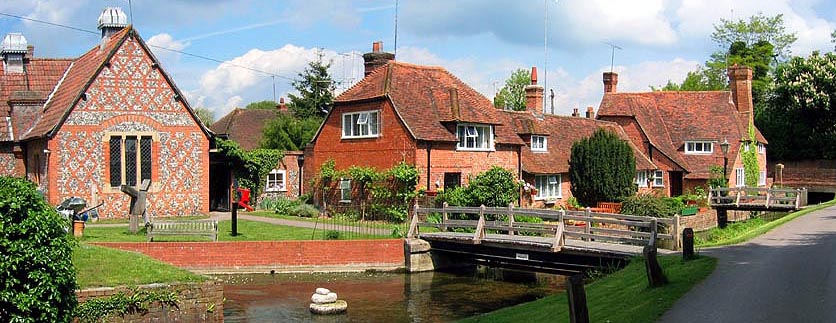 |
 |
||||||||
|
|
The 'Broad Field' began to devemop in the late 7th century. The church established there became a monastery. Its early history is thought to have been preserved in documents later attributed to Abingdon Abbey. An old story tells how the last of the Bradfield monks sallied forth to oppose William the Conqueror's army after the Battle of Hastings. Having failed in its defence against the invader, the monastery was dissolved and the wounded had to retire to Abingdon. In the mid-14th century, Bradfield was owned by the De la Beche family from La Beche Castle in Aldworth. When the Langford family inherited their estates in 1364, they made Bradfield their principal seat and built a house there called Bradfield Place. In Tudor times the manor passed to Thomas Stafford and during the time of his grandson, Sir Edward, as the local lord, his maternal uncle, Sir Henry Docwra (later Baron Docwra of Culmore) also lived at Bradfield Place. He had retired from a military career in Ireland where he is known as its founder of Derry. Mary, the wife of Sir Edward Stafford, became sole lady of the manor upon her husband's death in 1623. She subsequently married Elias Ashmole from the College of Arms, who left his collection of curiosities to Oxford University. This became the core of the Ashmolean Museum. Ashmole was hated by Mary's brother, Sir Humphrey Forster of Aldermaston House, and her second son, Humphrey Stafford. Stafford even tried to murder the poor man. Forster later tried to disrupt one of Elias' manorial courts held at Bradfield but was promptly arrested. Mary and Elias Ashmole were eventually hounded out of the village and forced to move to London, at which point their relationship broke down. Henry Stevens from Culham Court in Remenham purchased the manor in 1755. In 1837, this family built a new manor house on the present college site and, thirteen years later, Reverend Thomas Stevens gave this to his new foundation, St Andrew's College, now Bradfield College. The college has some interesting features, including a 1,600-seater Greek theatre based on that at Epidauros, built in a disused chalk pit in 1890. Thomas Stevens was also responsible for the rebuilding of the parish church and for the building of the Bradfield Workhouse in Union Road. Perhaps not surprisingly, he finally went bankrupt in 1881. Read more history of Bradfield and other nearby settlements, like Tutts Clump, Rotten Row & Bradfield Southend, in David Nash Ford's book, 'Mid-Berkshire Town and Village Histories'. Click to Order direct from the Author.
|
||||||||
| © Nash Ford Publishing 2003; Revised 2020. All Rights Reserved. | |||||||||





